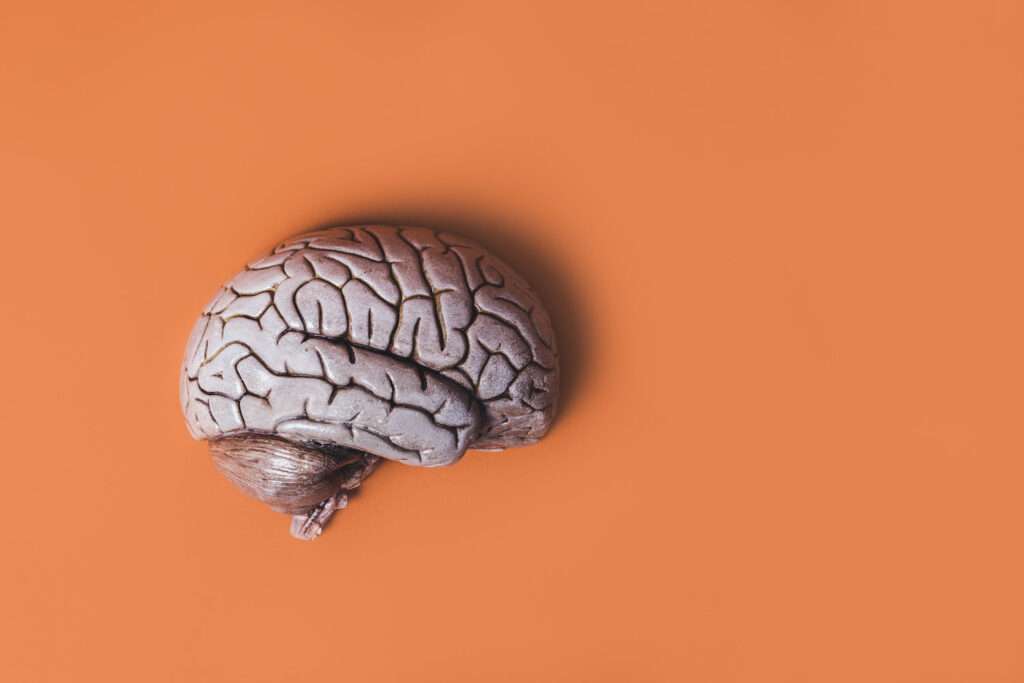By Daniel Amen, MD
Decades of research show that running delivers a multitude of health benefits—better cardiovascular fitness, stronger bones, reduced cancer risk, and healthier weight, to name just a few. But that’s not all.
Hitting the pavement—or the trails, beaches, or track—can also be a boon for brain health.
Here are seven reasons why running is so good for your brain:
1. Boosts brain activity … fast!
You don’t have to do a marathon to get the brain benefits from running. Just 10 minutes is enough to increase activity in the brain, according to a Japanese study.
This study used functional near-infrared spectroscopy and neuropsychological tests before and after participants ran at a moderate pace for 10 minutes. The results?
Running increased activity in the prefrontal cortex—a region involved in focus, planning, judgment, and impulse control—while also significantly improving moods and cognitive performance.

2. Provides a runner’s high.
Runner’s high is real: running triggers the release of brain chemicals that make you feel good. For decades, experts pointed to endorphins—nature’s opioids—as the source of runner’s high.
Brain-imaging research from Germany found that, in particular, runners’ prefrontal cortex and limbic areas release endorphins during a two-hour jog.
More recent findings, however, suggest that endocannabinoids may also play a role. These molecules are part of our nervous systems and a natural version of THC, the substance in marijuana that gives you a buzz.

3. Heightens mood-enhancing brain chemicals.
Going for a heart-pumping run increases levels of tryptophan, according to evidence in Exercise and Sports Sciences. Tryptophan is a precursor to serotonin, a brain chemical that is involved with mood.
For years, experts have suggested that low levels of serotonin are associated with depression. That’s one key reason why selective serotonin reuptake inhibitors are the most commonly prescribed antidepressants.
Research shows that physical exercise, such as running, can produce effects that are comparable to antidepressants. So, lace up your running shoes to get a mood boost.
4. Can reduce ADHD symptoms.
Aerobic exercise like running is the best natural solution for ADHD. As a child and adult psychiatrist for more than 40 years, I have noticed a direct correlation between the amount of aerobic exercise my patients do and the intensity of their ADHD symptoms.
In part, this is because running and other heart-pumping activities increase activity in the prefrontal cortex (PFC), an area involved in attention, impulse control, empathy, and planning.
In people with ADHD, our brain-imaging work shows that during concentration, activity in the PFC decreases, making it harder for them to focus and pay attention. By boosting blood flow and activity in this region, it reduces symptoms.

5. Curbs cravings.
Physical exercise can tell your brain to reduce cravings. Research in Physiology & Behavior shows that a sole session of high-intensity interval training, such as a moderate jog punctuated with several sprints, as well as a three-month program focused on high-intensity training, reduces cravings for junk food.
Brain-imaging research from the University of Exeter found that physical exercise changes the brain in ways that reduce cravings for nicotine in smokers.
In this study, participants had reduced activity in areas of the brain associated with reward and motivation. Increased activity in these regions is often linked to substance use disorders.

6. Reduces brain atrophy.
Who wants brain shrinkage? Nobody! A study in PNAS found that aerobic exercise like running increases volume in the hippocampus, a region that is involved in memory formation.
This study reported that exercise increased volume in the hippocampus by 2 percent, the equivalent of about one to two years of age-related atrophy. The researchers suggest these brain changes are associated with improvements in memory.

7. Enhances neuroplasticity.
The beauty of the human brain is that it can change in positive ways. Your everyday lifestyle habits are either boosting your brain or draining it. Running is a good-for-your-brain habit that can lead to increased neuroplasticity, according to a study in Frontiers in Aging Neuroscience.
This study reveals that cardiorespiratory fitness, which is typically higher in runners compared with sedentary people, is associated with greater activation and volume in multiple brain regions.
If you want the brain benefits that come from running, start slowly and build up your endurance. Many people begin by simply walking, then graduate to walking interspersed with short sprints before transitioning to jogging. Be sure to ask your healthcare provider before you begin a running program.
Daniel G. Amen, MD is a physician, board-certified child and adult psychiatrist, award-winning researcher, 17-time bestselling author, and in-demand speaker. He’s the Founder and CEO of Amen Clinics, which holds the world’s largest database of functional brain scans relating to behaviour, and the lead researcher on a landmark brain imaging and rehabilitation study on pro football players.
Dr. Amen has been on health-related podcasts, television programs, books, articles, music albums, and movies; and made numerous court and public appearances. His new book is Change Your Brain Every Day: Simple Daily Practices to Strengthen Your Mind, Memory, Moods, Focus, Energy, Habits, and Relationships.


